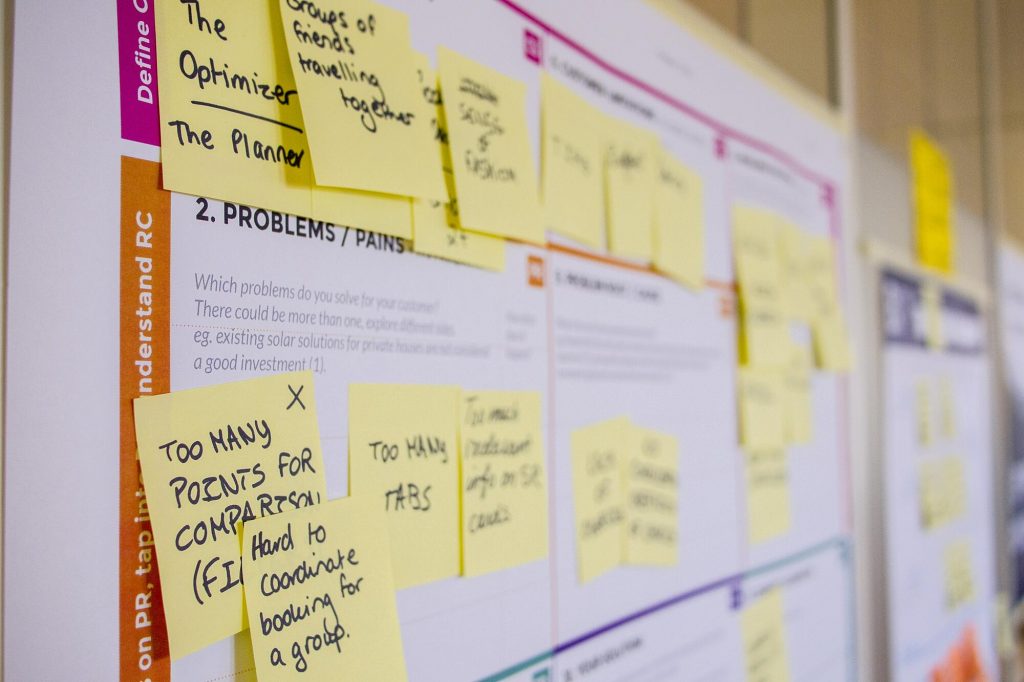Design thinking is a process that focuses on the user, challenges assumptions, and redefines problems in an attempt to identify alternative strategies and solutions that might not be instantly apparent with an initial level of understanding.
It is a way of thinking and working, and a collection of hands-on methods.
The Five Phases of Design Thinking
There are many ways to interpret design thinking. One of the original approaches, taught by Stanford’s d.school and endorsed by the Interaction Design Foundation, consists of five phases or steps:
- Empathize
- Define
- Ideate
- Prototype
- Test
Empathize
This stage attempts to understand the feelings of the target audience: to step into their shoes in order to fully understand their goals, challenges, experience, and perspectives. Such understanding can have far-reaching effects on the end product or result, such as level of language, choice of multimedia elements, style of assessments, and other aspects.
Define
Without correctly defining a problem, it’s nearly impossible to generate the necessary solution.
In the famous words of management consultant Peter Drucker, “You can’t manage what you cannot measure.” Businesses often prefer to quantify a problem by the numbers, but design thinking also allows for the definition stage to include qualitative aspects as well. The more accurate the problem or challenge is defined, the stronger the focus will be in seeking solutions.
Ideate
The Ideate stage is a critical step of the design thinking process. Ideally, this is carried out by teams from different departments or groups, who generate potential solutions to the problem identified in the Define stage. Collaboration goes a long way here.
Prototype
A prototype is simply a rough draft—a preliminary version of an approach, which provides a way to rapidly try out ideas without a large investment of time and money.
Paper and pencil sketches and storyboards, or photos of the whiteboard in the conference room, may not do the trick. There should be a process in place to create, distribute, and engage with prototypes so that they can be accessed anywhere and at any time by teams who may be dispersed geographically.
Test
Because design thinking is an iterative process involving a lot of testing and modification, the Test phase is all about seeing what works in the real world, obtaining feedback, and refining (or ditching) prototypes.
For this process to work, be sure to test your solution with the target population through all of its iterations.
How does design thinking fit in with instructional design?
Simply put, design thinking is empathetic and iterative—two key traits needed in learning and development. It does not replace instructional design; rather, it can work in concert with and enhance instructional design techniques.
The ADDIE model is the tried-and-true process traditionally used by instructional designers and training developers. The five phases—Analysis, Design, Development, Implementation, and Evaluation—represent a dynamic, flexible guide for building effective training and performance improvement tools.
Design thinking does not replace ADDIE or any other instructional design model. Rather, many of the principles can be inserted at various stages of ADDIE.
For instance, the Empathize and Define phases of design thinking can be used in the Analysis phase of ADDIE. Ideate and Prototype of design thinking can be inserted in the Design and Development phases of ADDIE.

Instructional design is now learning experience design
In its 2016 Global Human Capital Trends report, Deloitte boldly advises HR to adopt design thinking, placing the employee experience at the center.
Two-thirds of companies now believe complexity is an obstacle to business success and a barrier to growth in productivity. The numbers demonstrate this: 79 percent of respondents to the Deloitte survey rated design thinking an important or very important issue.
Design thinking moves HR’s focus beyond building programs and processes to a new goal: designing a productive and meaningful employee experience through solutions that are compelling, enjoyable, and—perhaps most importantly—simple.
Indeed, HR executives and L&D leaders can move from serving as a “process developer” to an “experience architect.” Design thinking empowers HR to reimagine every aspect of work: the physical environment; how people meet and interact; how managers spend their time; and how organizations select, train, engage and evaluate their employees.




